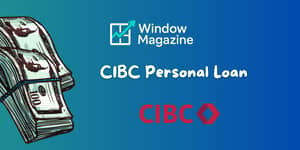
Taking time every three months to evaluate your finances can transform uncertainty into clarity. By pausing to reflect, you can take control of your financial journey and stay motivated toward your goals.
When you commit to a structured review every quarter, you build a habit of proactive, data-driven decision-making for your finances. Quarterly check-ins:
• Illuminate areas where adjustments are needed before small issues become large crises.
• Encourage accountability and help you celebrate progress, no matter how modest.
• Foster agility, allowing you to capture emerging trends and adapt swiftly to market or personal changes.
Whether you manage household finances or oversee organizational budgets, certain categories demand attention every quarter. Below are comprehensive lists for both contexts.
Creating a repeatable process ensures each review is thorough and efficient. Follow these steps to streamline your check-in:
First, gather all essential documentation: bank and credit card statements, investment reports, debt records, insurance policies, and receipts for large transactions. Having everything at your fingertips prevents wasted time.
Next, calculate your net worth by subtracting liabilities from assets. Assess liquidity by comparing cash reserves to short-term obligations. Consider hypothetical stress tests—such as unexpected job loss or market downturn—to gauge resilience.
Then, revisit or set goals using the SMART framework. Define targets that are align short-term actions with long-term goals and break them into quarterly milestones. For example, commit to increasing retirement contributions by 1% or paying an extra $200 monthly toward debt.
After updating goals, track your actual performance against planned milestones. Use spreadsheets or financial apps that visualize variances. If you overspend on discretionary items or if investments underperform, identify causes—be it unexpected medical bills or market volatility.
With insights in hand, adjust strategies. You might refinance a high-interest loan, automate a larger savings transfer, or rebalance your portfolio to maintain your risk profile. Document each decision clearly, assigning tasks and deadlines if you’re part of a team or family.
Finally, schedule the next check-in exactly three months out. Consistency builds trust in the process and makes each review feel less daunting over time.
Regular check-ins do more than keep you on budget; they foster confidence and reduce anxiety. By recognizing achievements—such as fully funding an emergency cushion or hitting an investment milestone—you reinforce positive habits. Even modest wins, like cutting discretionary spending by 5%, deserve acknowledgment.
Life events and market changes often trigger necessary goal adjustments. A new job, home purchase, or legislative shift can reshape your financial landscape. Embrace these moments as opportunities to refine your roadmap rather than derail it.
Ask yourself reflective questions at each review: Did I meet my savings target? Which expenses surprised me? Are my investments still aligned with my risk tolerance? These inquiries drive continuous improvement.
Ultimately, a quarterly financial review is not just an accounting exercise—it’s a powerful ritual for personal growth. By making intentional, well-informed choices every ninety days, you build momentum toward your aspirations. The small compounding changes yield significant results over time, leading you closer to financial freedom, security, and peace of mind.
Committing to a quarterly review transforms abstract ambitions into concrete achievements. With a clear process, the right tools, and a supportive mindset, you embrace boost confidence and reduce financial stress at every turn. Remember, the journey of financial mastery is built one quarter at a time.
References













